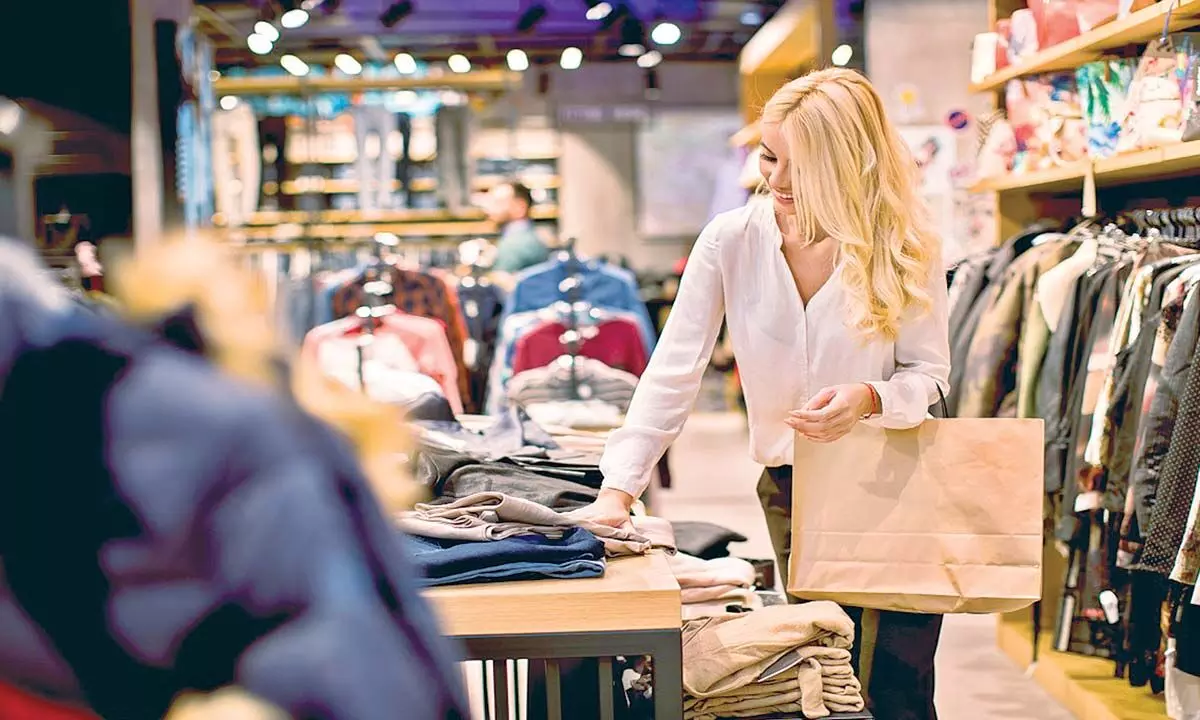Luxury goods market grows in 2022 due to resiliency of wealthy people
The global luxury market grew by nearly one-third to 288 billion euros ($198 billion) last year, rebounding from its worst recorded dip due to the 2020 pandemic lockdowns, according to the study commissioned by Italy's Altagamma association of high-end producers
image for illustrative purpose

After its worst dip in history, the personal luxury goods market has experienced a v-shaped rebound, reaching €288 billion in value. While much of the world is fretting over higher fuel and energy prices, the study by Bain & Company consultancy indicated that the global luxury market remains set for growth, largely due to the continued resiliency of the world's wealthiest people.
Neither inflation nor the war in Ukraine is threatening to take a bite out of the luxury fashion market, according to the study.
The global luxury market grew by nearly one-third to 288 billion euros ($198 billion) last year, rebounding from its worst recorded dip due to the 2020 pandemic lockdowns, according to the study commissioned by Italy's Altagamma association of high-end producers.
"Despite significant macro-economic challenges, including hyperinflation, slowing GDP growth and the Russia-Ukraine conflict, the personal luxury goods market proved resilient once again," said Claudia D'Arpizio, a Bain & Company partner and lead author of the study. "Luxury goods brands started this year showing especially strong growth while also playing a leading role in the world's ongoing sustainable and digital transformation."
The global personal luxury goods market reached €288 billion in value in 2021 and experienced a remarkable performance in the first quarter 2022
Luxury brands enjoyed growth from a strong holiday shopping season, maintained momentum in the US and a faster-than-expected recovery in Europe.
Europe is accelerating its recovery, despite the war's shadow. The region is on the path to recovery to 2019 levels one year before expectations, thanks to booming local demand driven by a fierce "back to normal" attitude and a rebound in intraregional tourism. The impact of the Russia-Ukraine conflict has so far been restricted to local markets, showing limited consequences on global luxury customer sentiment and spending.
The US is tapping into the power of diversity and inclusion. The US luxury market is experiencing unprecedented growth as luxury brands are unleashing the real power of diversity and inclusion, discovering the true potential of the entire American customer base.
China's spending is crunched under strict Covid restrictions. China showed strong momentum during the Chinese New Year and through March 2022. However, the country's spending has been challenged by its strict Covid restrictions, which proved much more significant than its 2020 policies. Yet, local consumer appetite remains strong and will potentially lead the country to recover between late 2022 to early 2023.
South Korea undergoes a profound transformation. The country has increased its size and cultural relevance, replacing touristic spending with local demand. Winning brands successfully reinvented their business model in the country to cater to growing local demand and influence.
Luxury brands in the virtual world: In addition to growth delivered by traditional luxury products, digital assets and the virtual world—the metaverse, social media and gaming—will play an increasingly relevant role in luxury brands' value propositions. By the end of 2030, digital assets and the metaverse will comprise 5-10 per cent of the luxury market. Luxury brands have the opportunity to play a key role in shaping the virtual worlds on the rise, acting as creators and builders.
With the growing relevance of direct-to-consumer channels, tech disruption favors luxury brands that adopt an uber-channel approach, building a new intimacy with customers by leveraging new and evolved touchpoints.
However, lack of clear sustainability standards, coupled with higher consumers' demand of sustainable products and evolving sustainability topics, represent a call to action for luxury brands: out-innovate on sustainability to build a competitive advantage.
A new working future is emerging, especially for younger generations. Luxury brands will need to expand their people value propositions, embrace diversity, become talent makers as opposed to talent takers and smartly leverage automation.
The market could reach €360-380 billion by 2025
Despite the challenges and disruptions that happened in early 2022, the mid-term direction of the luxury market remains unchanged. Bain & Company estimates market growth to reach €360-380 billion by 2025. "In the last few months, luxury brands have been forced to reroute their futures" said Federica Levato, a Bain & Company partner and co-author of the report. "Winners will rapidly embrace the changes, ensuring they fully understand the implications of new geopolitical dynamics and cultural trends for all of their stakeholders: consumers, investors, employees and society at large. Those that come out ahead will take advantage of the opportunities presented by the virtual world, the sustainability transformation and preferences of younger generations."

